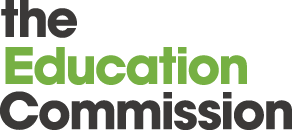In all my years working in education, I would say that 2015 was one of the most exciting so far with new online learning opportunities opening up for millions of learners. Now, a third of the way through 2016, the education world continues to make incredible progress toward ensuring inclusive and quality education for all – as outlined in the United Nations’ Sustainable Education Goals.
Online learning is a crucial driver of increased access to education, and there are five key areas in which we have made significant progress. These five advancements are critical for making online learning more valuable and available to learners around the world and to the evolution of education for all:
1. Massive Open Online Courses (MOOCs) translating into college credit
New programs are launching worldwide that accept coursework completed through MOOCs as credit in larger degree programs.
For example, Kiron provides online education for thousands of Syrian and other refugees who have been displaced by war and are now beginning their lives in new countries, mainly in Europe. At edX, we work with Kiron by providing high-quality education via MOOCs and free verified certificates, which will then be accepted as credit within Kiron’s on-campus partner universities. Through these online resources and credentials, refugees are able to access quality education and improve their lives.
The opportunities for MOOCs to translate into credit are expanding in the U.S. as well. With Arizona State University, we recently launched the Global Freshman Academy (GFA), which is reimagining the college admissions process and opening up new learning pathways to college credit. Open to everyone, GFA enables students to take their entire freshman year online for credit, at low cost – thus expanding educational opportunities worldwide. We have similarly partnered with Charter Oak State College, which offers college credit for qualifying MOOCs on edX.
Attaching credit to MOOCs helps ensure the quality and accountability of the educational content and value while also opening up new pathways to credentials and on-campus programs.
2. The blended model becoming the new normal
Increasingly, schools are using a blended model of education – incorporating online learning tools outside of the classroom to increase efficiencies within the classroom.
When students come into a class having already gained a general understanding of the material from video lectures and online exercises, there is more opportunity for them to work in groups, or for one-on-one instruction with professors to build knowledge on the finer points of a topic.
At MIT alone, more than 90 faculty members and instructors have experimented with blended classrooms, and between 30 and 50 MIT on-campus courses are using online coursework each semester, creating a blended format for students.
With the blended format, online learning enhances educational experiences for both remote and on-campus learners.
3. Unbundling education
Until recently, a standard bachelor’s degree required students to spend three or four consecutive years on a college campus. The campus experience is still extremely valuable, but more students can experience high-quality education when granted more flexibility.
In the near future, students will be able to do research or work in the field while updating their skills or even taking an entire freshman or senior year online. They will be able to end their four-year college arc with real, tangible industry experience – not just a handful of brief summer internships.
It is silly to say that a person learns everything they need to know for their career in those first three or four years of college. For the rest of a student’s lifetime, they can return to education remotely and continue to take sequences of courses, earning valuable digital credentials for personal enrichment or to advance their career.
4. Leveraging online courses to close the skills gap
As tech companies continue to grow and require skilled talent, colleges struggle to keep pace with the advancements. However, online education in areas like computer science and data science enables people all over the world to take career-relevant courses, allowing talent pools to deepen.
IBM has made strides in this area with its developer Works platform, a global online learning network for developers, students, and university faculty. And LinkedIn’s purchase of Lynda.com in 2015 represents additional efforts to create skill-focused learning opportunities.
Learners at any level can pursue career-focused education through online learning to increase their workplace value.
5. Traditional credentials diversifying beyond the college degree
Amid struggles to fill their technology-related job openings, many companies are revising their hiring practices and finding value in credentials beyond the traditional degree. It’s becoming increasingly common for companies to say that they have promoted personnel based on new digital credentials earned in MOOCs. Tech development requires very specific knowledge and these skills can often be gained outside of a traditional institution.
As a result, new resources like industry boot camps and online skills development programs are opening up. International companies like Infosys and Wipro in India have built their own company boot camps to skill up recent college hires, and U.S.-based nonprofit organizations like LaunchCode have been connecting new recruits to paying jobs with training from online courses. And, new-age digital credentials like the MicroMaster’s from MIT are also enabling students to access career-focused education fully online.
Moving forward, the education world will build upon these worldwide successes. Online education allows learners to deepen their knowledge at any age or stage of their lives and show mastery of concepts and knowledge.
Always in our sights should be a day when anyone, from any part of the globe, can have access to the education – and the future – that he or she desires.
Anant Agarwal is the CEO of edX and a Professor at the Massachusetts Institute of Technology.

